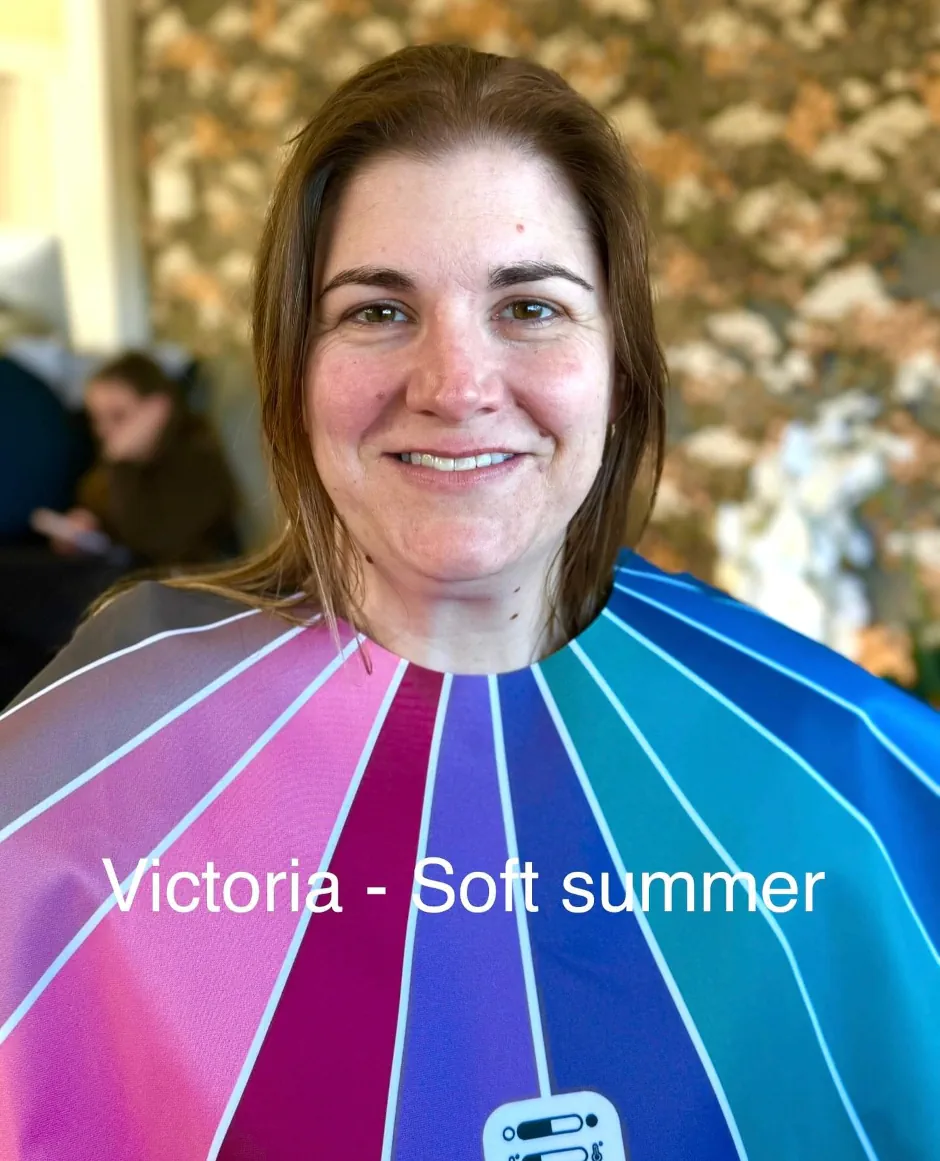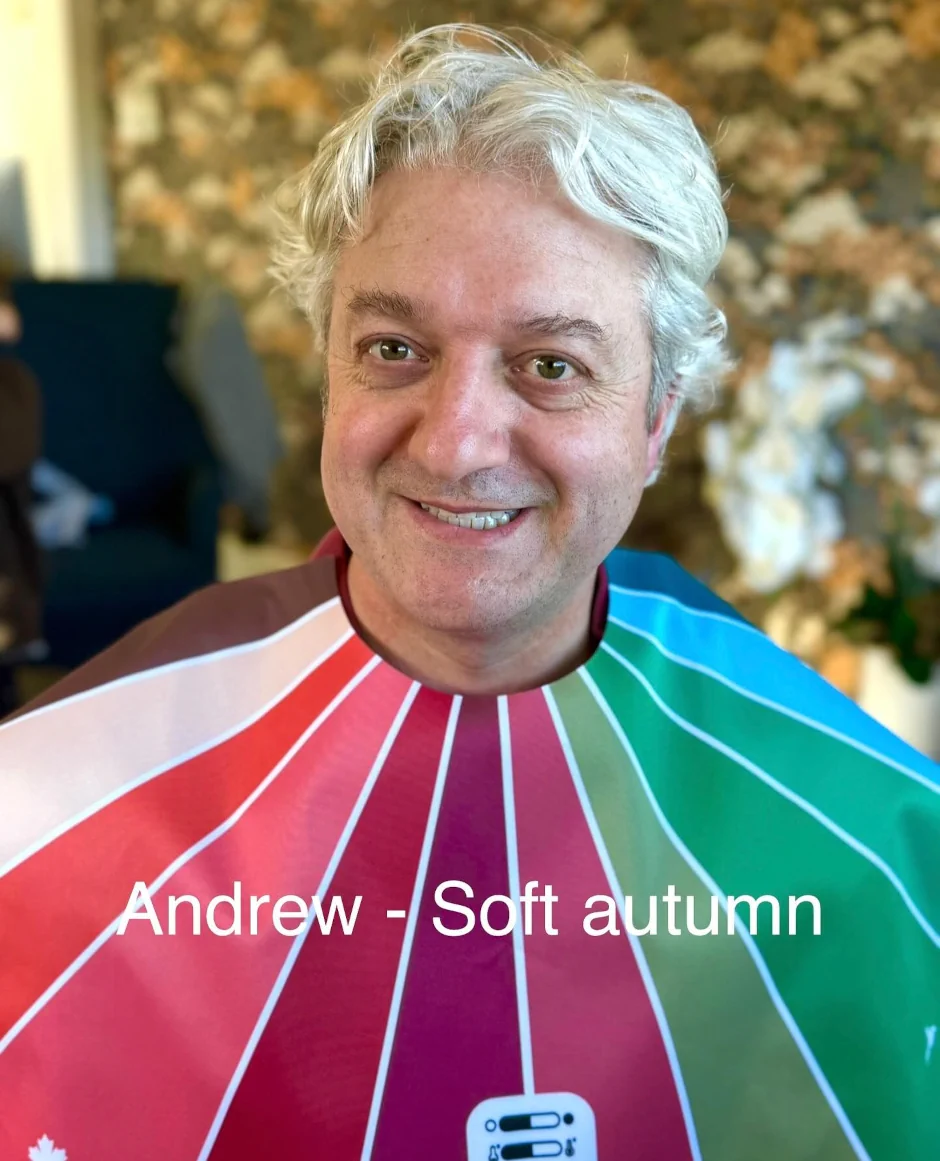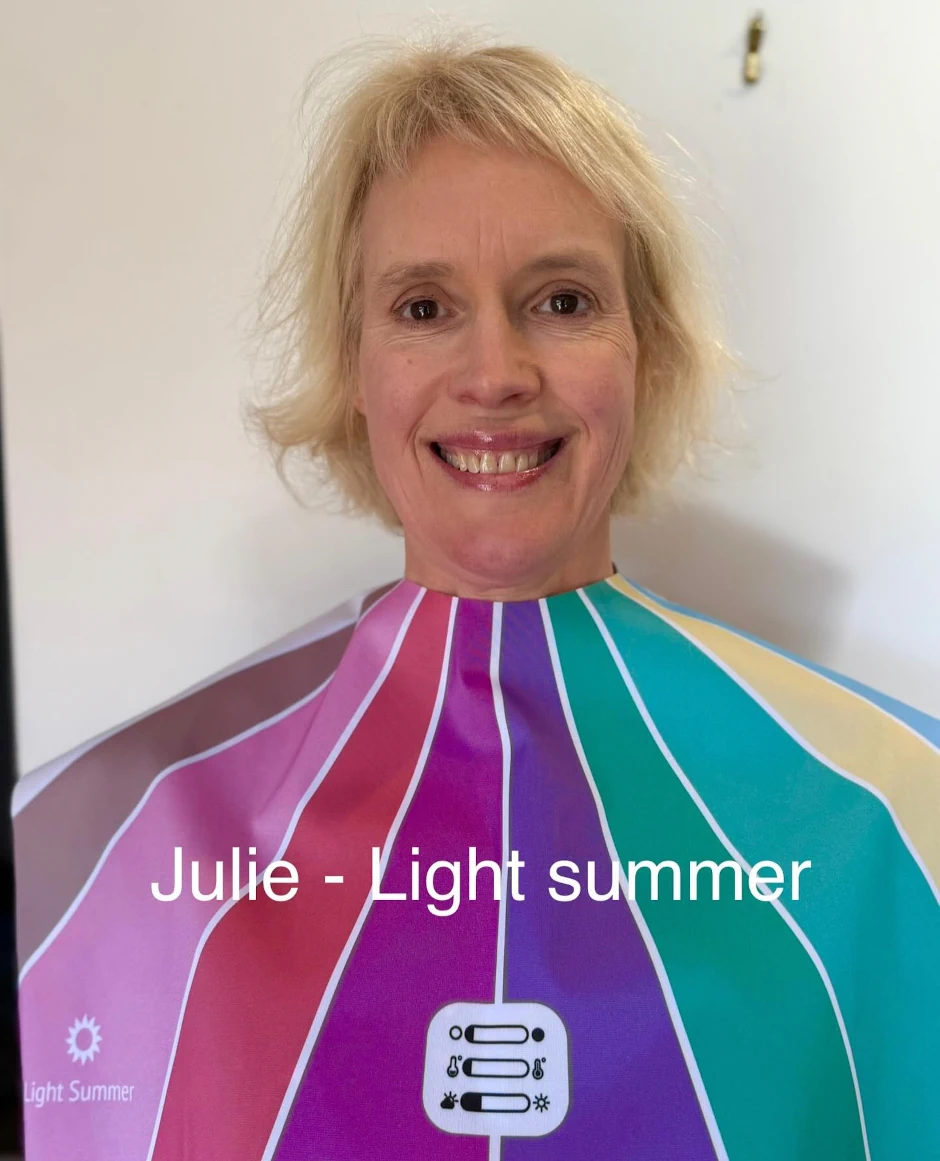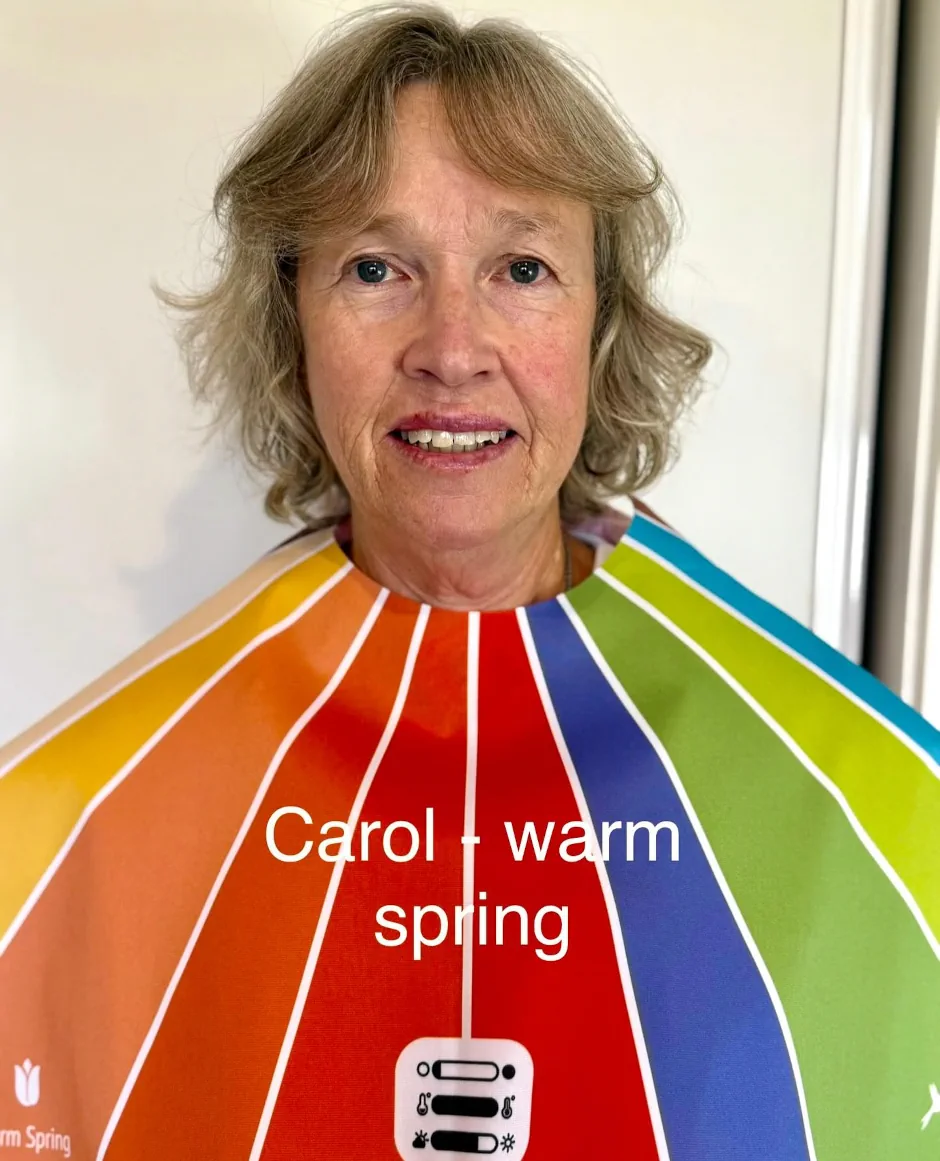
Colour In Fashion: The Power of Colour Analysis in Personal Style
3
46
0
Navigation
What Is a Colour Analysis Consultation?
The Evolution of Colour Theory and Colour Systems
The Digital Revolution: Introducing the Colour Analysis App
How a Colour Analysis Works: The Process
Why Wearing the Right Colours Matters
Real-World Applications: Model Styling, Wardrobe Audits, and Shoe Colour
Beyond the Swatches: Why Black Isn't Always Best
Final Thoughts: Dress in a Way That Reflects Who You Are
In this episode of the Style for Life podcast, Stephanie Rumble, professional fashion stylist, accountability coach, and health educator, takes us deep into the transformative world of colour in fashion. Drawing from over three decades of experience and countless client sessions, Stephanie shares her personal journey with colour analysis, the evolution of the process, and how it can help anyone feel more confident, radiant, and authentic in the clothes they wear.
This episode is more than just an exploration of style. It's a powerful reminder that the colours we wear have the ability to enhance our appearance, simplify our wardrobes, and support self-expression. Stephanie also introduces her digital colour consultation process, supported by the Your Colour ID app — a modern solution for personalised, tech-powered style guidance.
What Is a Colour Analysis Consultation?
At its core, a colour analysis consultation is a personalised process that assesses your skin tone, eye colour, and natural hair colour to identify a palette of colours that enhance your natural features. This service goes far beyond fashion trends and instead focuses on uncovering the timeless colours that work in harmony with your body.
“I fundamentally know, believe, and understand that when you understand which colours work for you, then it's so much easier to get dressed.” ~ Stephanie Rumble
Stephanie explains that during a session, a stylist will determine your undertone (either warm undertone or cool undertone), assess the chroma (how bright or muted your colouring is), and evaluate your value (how light or dark your features are). Once these elements are understood, a tailored palette is selected from one of the 16 colour groups, a far more nuanced system than the old seasonal approach.

This isn’t just about choosing colours that "look good." It’s about understanding the emotional and psychological impact of colour on how we feel and present ourselves to the world. Stephanie explains how this knowledge makes dressing easier, decision-making more intuitive, and shopping far less overwhelming.
Some of the most notable benefits of colour analysis include:
Highlighting your natural glow and evening out your complexion
Reducing the appearance of dark circles, sallowness, or redness
Making personal shopping faster, easier, and more enjoyable
Helping you build a cohesive wardrobe with clothes that mix and match effortlessly
Supporting emotional confidence through better self-expression
“You don't know exactly until you really get someone there. You put the colours in front of them and you see what works.” ~ Stephanie Rumble
The advantages extend well beyond your wardrobe. For many clients, colour analysis becomes a catalyst for deeper self-confidence and transformation in how they approach personal and professional interactions.
The Evolution of Colour Theory and Colour Systems
Stephanie gives an insightful history of colour theory in the context of fashion. She recalls her first colour consultation at 16, which used the traditional spring fashion academy method — a system that categorised people into four groups: spring, summer, autumn, and winter.
“You look more radiant and energetic when you don't wear colours that wash you out.” ~ Stephanie Rumble
These original systems used a simple fan deck of colour swatches, which were useful but limited. Over time, colour theory has become far more sophisticated. Today, professional stylists like Stephanie use in-depth analysis tools that take into account:
Variations within seasonal palettes (e.g., cool and muted, warm and muted, cool and clear, warm and clear)
The role of contrast between skin, eyes, and hair
Expanded palettes that reflect more diversity in skin tones
By incorporating elements like muted colouring and high or low levels of colour contrast, today’s consultations offer a more inclusive and accurate experience. What was once a generalised recommendation is now a finely tuned, customised colour map that aligns with your individual identity.
This refined approach ensures every client receives a palette that is as unique as their personality, lifestyle, and natural features.
The Digital Revolution: Introducing the Colour Analysis App
One of the most exciting parts of the podcast is the introduction of the Your Colour ID app, powered by Image Innovators. This tool has revolutionised the way colour analysis is delivered, enabling stylists like Stephanie to offer a digital colour analysis service to clients anywhere in the world.
With the app, clients receive:
A fully personalised digital palette with over 150 colours
Makeup recommendations based on their signature colours
Contrast and coordination tips for outfits
Seasonal updates and real-time swatch comparisons
The ability to match clothing directly from online stores or in-person shopping

This next-gen approach combines technology with human expertise. Stephanie explains how the app makes it easy for clients to shop smarter, feel confident in their purchases, and access their colours on the go. It also allows her to offer virtual consultations globally — bringing the magic of colour to anyone, anywhere.
For those who have had past experiences with outdated versions of the old-style colour palette system, this modern upgrade provides a more flexible, interactive, and user-friendly alternative.
How a Colour Analysis Works: The Process
The colour analysis process involves a series of carefully structured steps. Stephanie outlines how she conducts each session:
Pre-consultation: Clients send in photos and complete a short form. This helps her pre-load key information into the app.
Warm or Cool Test: Using colour drapes, she identifies whether the client's undertone is warm or cool.
Clear vs Muted & Light vs Dark: She assesses chroma, value, and contrast levels.
Personal Preferences: Stephanie discusses colour likes, dislikes, and past experiences.
Final Coding: The client's results are coded to one of the 16 colour groups, and a full palette is loaded into the app.
“It's an art and a science like medicine is, medicine is an art and a science, and so is colour analysis.” ~ Stephanie Rumble
Beyond the logistics, Stephanie takes time to educate her clients throughout the consultation. She talks through the visual effects of colour on the skin, the psychology behind colour choices, and the practical application of your palette in both everyday and special occasion wear.
This collaborative, insight-rich process not only delivers a customised swatch but empowers clients to use it effectively for long-term wardrobe planning.
If you're curious about combining this with body shape advice and wardrobe planning, Stephanie also offers an integrated approach in her all-in-one style consult packages.
Why Wearing the Right Colours Matters
Stephanie shares how the wrong colours can drain your face, highlight imperfections, or make you appear tired. In contrast, the right colours lift your features, balance your face, and often reduce the need for heavy makeup. The emotional shift can be just as powerful as the visual transformation.
“If you've always been thinking, oh, I don't wanna get my colours done, it's too limiting. Honestly, it's so the opposite of that, it is a mind blowing experience.” ~ Stephanie Rumble
Here are some key reasons why wearing good colours matters:
You’ll look younger and more energised
You’ll feel more confident and expressive
You can build a sustainable wardrobe with fewer pieces
You’ll shop with clarity, avoiding random or regrettable purchases

Stephanie also points out that many people stick with what feels "safe," like black or grey, but don’t realise how much better they could look and feel in more harmonious shades. Knowing your great colours means you stop guessing and start expressing.
The result is not just an aesthetic improvement, but a real sense of empowerment that can ripple across multiple areas of your life.
Real-World Applications: Model Styling, Wardrobe Audits, and Shoe Colour
Beyond daily wear, Stephanie applies colour analysis principles to a wide range of styling scenarios. Her expertise extends into professional, commercial, and personal contexts, making colour an essential foundation no matter the setting.
Model styling for photo shoots or events
Styling support for photo shoots and promotional imagery
Personal shopping guidance, including shoe colour coordination
Helping clients update their wardrobes and repurpose items
Clients often find that once they understand their colours, layering becomes intuitive, accessories feel easier to choose, and shopping becomes less stressful. For those working with a professional image, such as speakers or business owners, colour harmony also translates to more cohesive branding.
This versatility makes colour analysis a valuable investment that pays off across every area of your personal and professional style.
Beyond the Swatches: Why Black Isn't Always Best
A recurring theme in the podcast is Stephanie’s strong stance on bad colours, especially black. While black is a national favourite in New Zealand, Stephanie explains why it doesn't flatter everyone, particularly when worn near the face.
Instead, she encourages clients to:
Identify their best neutrals
Use muted colouring if they suit it better
Borrow from other palettes like autumn colour palette or spring colour palette depending on hair and eye colour
“Black is definitely not a colour for everybody, especially when worn near the face” ~ Stephanie Rumble
This is a big mindset shift for many clients who assumed they "had to wear black" for professionalism or slimming effect. Stephanie provides a new narrative rooted in self-expression and natural harmony. She reminds us that fashion is not about rules, but about wearing what enhances who you are.
Releasing the pressure to conform to black opens up more flattering, vibrant options that energise your look and better reflect your personality.
Final Thoughts: Dress in a Way That Reflects Who You Are
Stephanie Rumble believes that great style starts with self-knowledge. And colour analysis is the gateway to that understanding.

Rather than relying on trends or outdated rules, colour consultations empower people to:
Honour their natural colouring
Dress in a way that aligns with their lifestyle and personality
Feel confident without overthinking their wardrobe
Whether you're refreshing your wardrobe, planning a brand photoshoot, or simply tired of wasting money on clothes that don’t feel right, a colour consultation could be the style reset you need.
For those interested in a more holistic approach to personal transformation, Stephanie also offers accountability coaching for health and lifestyle that complements her styling services. She also runs customised workshops and education sessions for teams and professionals who want to explore confidence, wellness, and communication in a group setting.
In Stephanie’s world, style isn’t about rules — it’s about resonance. And nothing resonates more deeply than wearing colours that make you feel alive.
Listen on Spotify
Frequently Asked Questions
What is a colour analysis consultation?
A colour analysis consultation is a personalised process where a trained stylist evaluates your skin tone, eye colour, and natural hair colour to determine which colours best enhance your appearance. It helps you understand whether you have a warm or cool undertone and what palettes suit you best. Stephanie Rumble uses the advanced 16-group colour system and a digital app to provide a custom swatch you can use when shopping or getting dressed.
How do I know if I’m wearing the wrong colours?
Wearing the wrong colours can make your skin look pale, dull, or uneven, and may highlight dark circles or imperfections. You may also feel uncomfortable, even if the garment fits well. Stephanie discusses how certain colours drain energy from your face and how colour analysis can correct this quickly.
What are warm and cool undertones?
Warm undertones tend to have yellow, peach, or golden tones in the skin, while cool undertones lean toward pink, red, or blue hues. Stephanie uses professional drapes and training to determine your undertone accurately, as this can’t be guessed by appearance alone.
Can I still wear black if it’s not in my colour palette?
Yes, but it’s recommended to wear it away from your face if it doesn’t suit your skin tone. Stephanie explains in the podcast how you can balance black with accessories or by layering it with better colours for your undertone. Bottoms, shoes, and outerwear are great ways to keep black in your wardrobe.
What is the Your Colour ID app?
The Your Colour ID app is a tool used during Stephanie's consultations that generates a personalised digital palette based on your colouring. It includes over 150 colours, with features like seasonal updates and swatch comparisons. It's available globally through her colour consultation service.
How many colour groups are there?
The modern colour analysis system Stephanie uses includes 16 colour groups, offering a more precise result than the older four-season method. These include categories like warm and clear, cool and muted, and more, providing flexibility for all skin tones and features.
What if I’ve already had my colours done?
Stephanie encourages clients to revisit their colours, especially if their hair colour has changed or it’s been several years. In the podcast, she mentions working with clients who came back for an update and benefited from the new app-based analysis system.
Is colour analysis only for women?
Not at all. Stephanie works with clients of all genders and ages. She shares an example in the podcast of a male client whose colouring surprised both of them. Men can benefit just as much from learning which colours make them look more vibrant and confident.
How can I use my colour palette when shopping?
Once you’ve received your custom palette through a consultation, you can use it to quickly filter what’s worth trying on. Whether in-store or online, you can compare clothing to your palette using the app or a printed swatch to ensure better purchases and a cohesive wardrobe.
Can colour analysis help simplify my wardrobe?
Absolutely. One of the main benefits is making your wardrobe more cohesive and efficient. Stephanie explains how colour analysis reduces the guesswork and helps you build a wardrobe where most pieces work together. You can also explore her styling services if you’re ready to take the next step.












